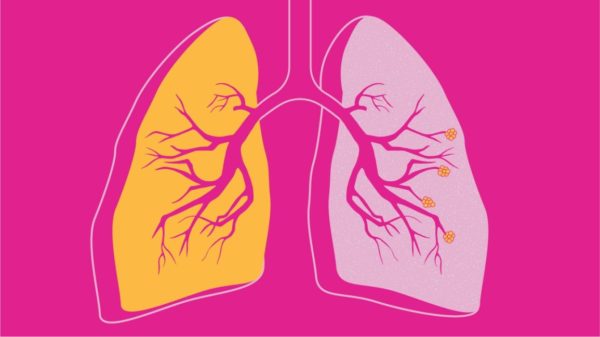COVID-19, short for coronavirus disease 2019, is an infection caused by severe acute respiratory syndrome coronavirus 2 (SARS-CoV-2). SARS-CoV-2 is a newly identified pathogen that has not previously been seen in humans and is highly contagious. Though it belongs to the same category of viruses as SARS coronavirus (SARS-CoV) and influenza viruses, SARS-CoV-2 is a different strain with its own characteristics.
COVID-19 was first reported in Wuhan, China, in December 2019, and the outbreak has spread quickly across the world, prompting the World Health Organization (WHO) to declare COVID-19 a pandemic.
How does COVID-19 spread?
Because COVID-19 is a new virus, nobody has prior immunity to it, meaning the entire human population is prone to infection.
It primarily spreads via respiratory droplets when people cough or sneeze. Scientists have yet to understand how easily and sustainably the disease can spread among people. Based on available evidence, researchers do not think the airborne spread is a major transmission route.
Individuals over age 60 are at the highest risk of developing a severe case of COVID-19, while children do not seem to be at a higher risk than adults.
There are currently no reports about how susceptible pregnant women may be to COVID-19 or about the transmission of the virus through breast milk.
What are the symptoms of COVID-19?
Common symptoms of COVID-19 begin two to 14 days after exposure. They include fever, tiredness, and dry cough. Other symptoms include sputum production, shortness of breath, sore throat, headache, myalgia (muscle pain) or arthralgia (joint pain), chills, vomiting, and nasal congestion. Less frequent symptoms include diarrhoea, hemoptysis (coughing up blood from the respiratory tract), and conjunctival congestion.
Most of these symptoms are usually mild, and about 80% of people who get the virus will typically recover without needing any special treatment. However, about 1 in 6 patients become seriously ill and develop breathing difficulties.
What general preventive measures should people take?
The following simple preventive measures can help minimize the spread of COVID-19:
Wash your hands often with soap, lathering both the front and the back of the hands and fingers for at least 15 to 20 seconds. If soap is not available, use a hand sanitizer that contains at least 60% alcohol. The European Centre for Disease Prevention and Control produced a poster detailing effective handwashing.
Avoid close contact with someone who is ill. (Maintain a distance of at least 1.8 meters). Stay at home if you are sick. Use a tissue to cover your mouth and nose if you cough or sneeze and dispose of it properly afterwards.
Disinfect surfaces and objects you touch frequently. Avoid touching your eyes, nose, and mouth with unwashed hands.
The U.S. Centers for Disease Control (CDC) does not recommend that healthy people wear a face mask.
What extra precautions should COPD patients take?
Patients with chronic obstructive pulmonary disease (COPD) should take appropriate preventive measures as they are at a higher risk of having a more severe infection than others.
In addition to the general preventive measures listed above patients should:
- Stock up on necessary medications and supplies that can last for a few weeks.
- Avoid crowds and non-essential travel.
- Stay at home as much as possible.
Most patients with respiratory diseases will recover from COVID-19. If symptoms of a viral infection appear and patients have travelled to a high-risk area in the past 40 days, they should self-isolate at home for 14 days. They should maintain their daily care regimens and speak to their healthcare providers for any specific queries about their personal health.
Advice for family members and caregivers
Family members and caregivers of people with chronic diseases should take appropriate precautions and take extra care to avoid bringing COVID-19 home. They should constantly monitor patients and stock medicines and other necessary supplies that can last for several weeks. Storing extra non-perishable food can help minimize trips to the grocery store.
People who show symptoms of COVID-19 should avoid visiting their family members until the self-isolation period is complete.
What should sick individuals do?
If symptoms are present and a COVID-19 diagnosis is confirmed, patients should follow these steps to prevent the spread of the infection:
- Stay at home, preferably in a separate room not shared with others, and isolate themselves, with the exception of getting medical care.
- Avoid public areas and public transport.
- Limit contact with pets and animals.
- Avoid sharing personal items.
- Cover coughs and sneezes with tissues and dispose of them properly.
- Sanitize hands regularly.
- Disinfect surfaces such as phones, keyboards, toilets, and tables.
People should call ahead before visiting the hospital for an appointment. This way, the hospital can take necessary steps to prevent the spread of the infection.
Patients who have confirmed COVID-19 should wear face masks when going out. The WHO’s website has a resource explaining the proper use of a face mask.
What tests are available?
The CDC has developed a diagnostic panel that is available to CDC-qualified laboratories in the U.S. Food and Drug Administration (FDA) has not approved this test but has made it available under a special emergency use authorization.
Apart from the tests that the CDC made available, researchers are continuously developing new tests. One such recently available test is the Cobas SARS-CoV-2 test that Roche Diagnostics developed. The FDA issued an emergency use authorization to the Cobas test too. The U.S. Department of Health and Human Services (HHS) is funding the development of two other diagnostic tests that can detect the presence of SARS-CoV-2 within one hour.
Samples for initial diagnostic testing include swabs from the upper respiratory tract such as the nose and throat and, if obtainable, from the lower respiratory tract such as the sputum.
A positive test result means infection with SARS-CoV-2 is confirmed. In such a situation, doctors place the patient under isolation. While a negative test indicates the absence of the virus, there is still a likelihood of false negatives, especially in the early stages of infection, where the number of viruses is too low to be detectable. A negative test in a person who clearly shows COVID-19-like symptoms mostly indicates that SARS-CoV-2 is not the cause of his or her illness.
Is there a treatment?
There are currently no vaccines available for human coronaviruses including COVID-19. This makes the prevention and containment of the virus very important.
Oxygen therapy is the major treatment intervention for patients with severe disease. Mechanical ventilation may be necessary in cases of respiratory failure.
Are there new treatments being developed?
The first clinical trial of a possible treatment for COVID-19 has begun in the U.S. The National Institute of Allergy and Infectious Diseases is sponsoring a randomized, controlled Phase 2 trial to evaluate the safety and efficacy of the broad-spectrum anti-viral treatment redeliver by Gilead Sciences to treat the disease.
Other treatments being investigated for COVID-19 include a novel mRNA-1273 nanoparticle-encapsulated vaccine (NCT04283461), thalidomide (NCT04273581), sildenafil (NCT04304313), eculizumab (NCT04288713), recombinant human interferon-alpha 1 beta (NCT04293887), bevacizumab (NCT04305106), and antibodies from cured patients (NCT04264858), among others.
A complete list of all ongoing clinical trials pertaining to COVID-19 is available here.
Researchers are also looking at new synthetic biology approaches by using self-assembling nanoparticles coated with viral antigens that can precisely target SARS-CoV-2. This approach can potentially overcome some of the limitations of conventional vaccines such as short shelf-life and viral evolution.
CPAPstore.eu provides strictly news and information website about the disease. It does not provide medical advice, diagnosis, or treatment. This content is not intended to be a substitute for professional medical advice, diagnosis, or treatment. Always seek the advice of your physician or another qualified health provider with any questions you may have regarding a medical condition. Never disregard professional medical advice or delay in seeking it because of something you have read on this website.
source: https://copdnewstoday.com/information-about-covid-19-for-copd-patients/



